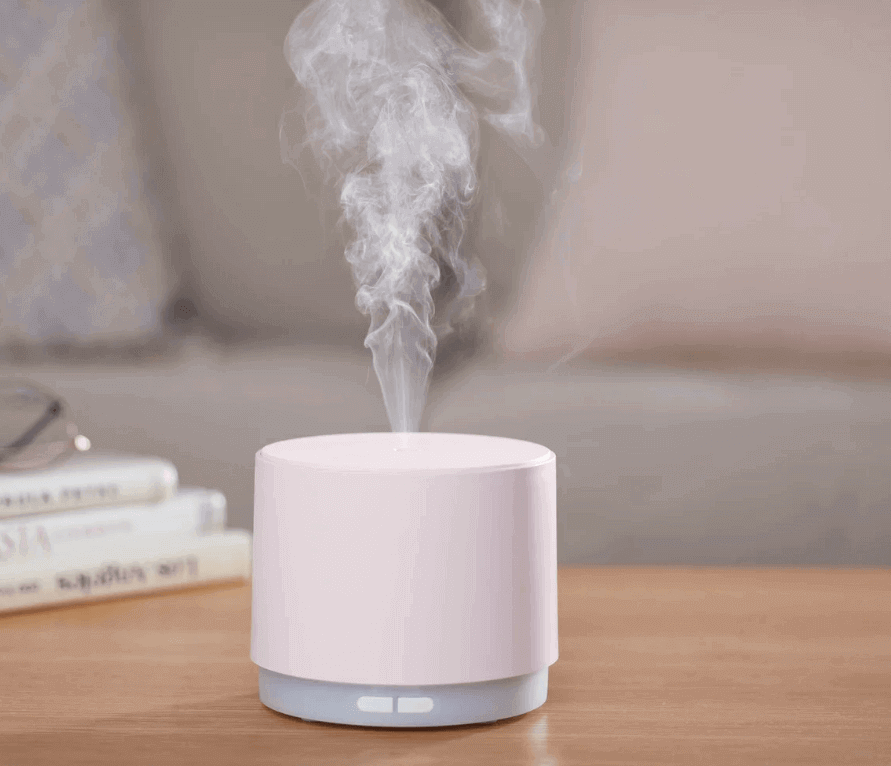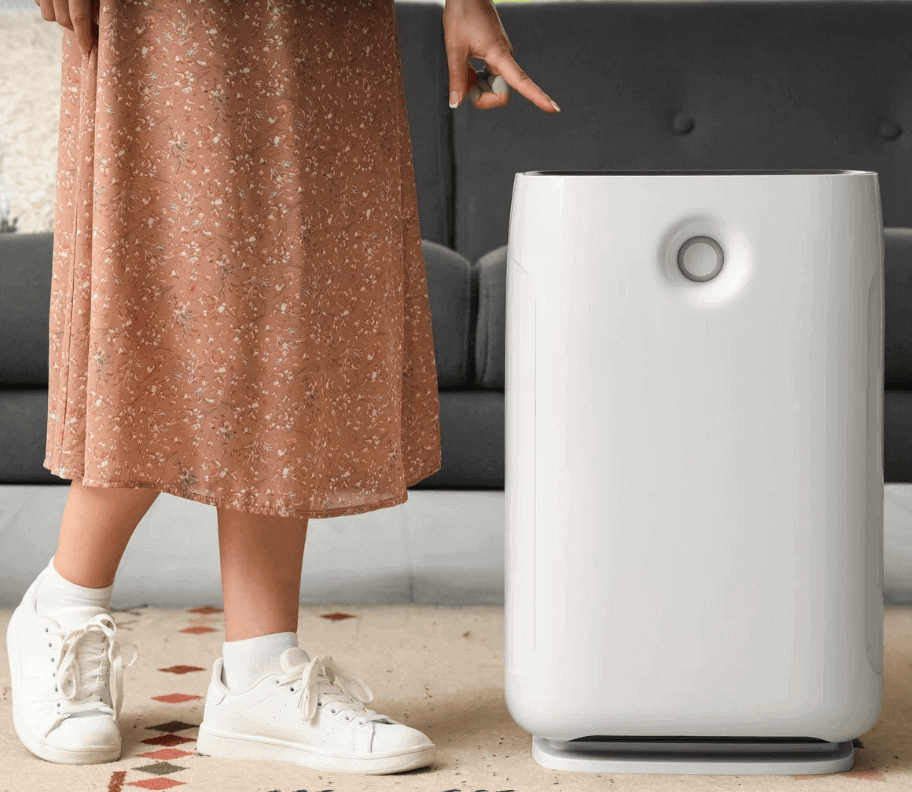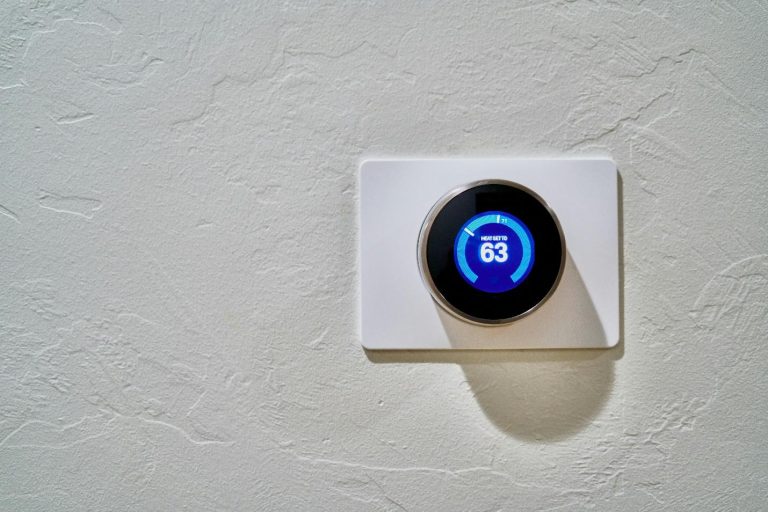Creating a Healthier Home—Comprehensive Strategies for Improving Indoor Air Quality
This post contains affiliate links. Click here to read my affiliate policy.
Last Updated on October 28, 2025
The air circulating through our homes profoundly affects our health, comfort, and daily well-being. When indoor air quality (IAQ) deteriorates, it doesn’t just create minor inconveniences—it can trigger persistent allergies, worsen respiratory conditions, and leave us feeling drained with unexplained headaches and general malaise.
Building a healthier home requires a thoughtful blend of approaches: ensuring proper ventilation, maintaining consistent cleaning routines, and strategically using devices like an air purifier or a humidifier to keep humidity levels in check.
When you master these effective IAQ improvement techniques, your home transforms from merely a living space into a genuine health sanctuary for your entire family.
Understanding Indoor Air Quality
Indoor air quality encompasses the cleanliness and healthfulness of the air within our buildings and enclosed spaces. What many people find surprising is that research consistently demonstrates indoor air can contain two to five times more pollutants than the air outside—making IAQ a pivotal factor in both our immediate comfort and long-term health prospects.
The culprits behind indoor air pollution form a diverse lineup: dust mites thriving in bedding and upholstery, pet dander floating invisibly through rooms, volatile organic compounds (VOCs) seeping from furniture and cleaning products, mold spores multiplying in damp corners, lingering tobacco smoke, and combustion byproducts drifting from gas appliances.
Humidity levels add another layer of complexity to this equation—excessive moisture creates the perfect breeding ground for mold and dust mites, while overly dry air irritates respiratory passages and generates annoying static electricity throughout your home.
Key Strategies to Improve Indoor Air Quality
Ensure Adequate Ventilation
Think of proper ventilation as your home’s respiratory system—it forms the cornerstone of healthy IAQ by diluting pollutants and ushering them out of your living space. Fresh outdoor air acts like a natural cleanser, washing away the contaminants that inevitably build up in sealed environments.
You can achieve meaningful ventilation improvements and a healthier home through straightforward steps: opening windows during pleasant weather, running exhaust fans in bathrooms and kitchens during use, and ensuring your HVAC system maintains effective air circulation throughout your home.
That said, outdoor air quality deserves consideration before you throw open every window. If your home sits near heavily trafficked roads, industrial zones, or you’re dealing with high pollen counts, mechanical filtration systems often provide a smarter alternative to simply inviting outside air indoors.
Control Humidity Levels
Keeping indoor humidity within the sweet spot of 40-60% creates an inhospitable environment for dust mites, prevents mold from gaining a foothold, and maintains optimal respiratory comfort. Step outside this range, and problems multiply quickly—too much moisture becomes an open invitation for mold and bacteria, while insufficient humidity leaves mucous membranes parched and increases vulnerability to infections.
Digital hygrometers make humidity monitoring straightforward, allowing you to adjust levels as conditions change. When dry seasons arrive, humidifying devices can restore necessary moisture to your air, while dehumidifiers prove invaluable during muggy periods.
Prevention remains equally important: run exhaust fans during cooking and showering, address leaks the moment you discover them, and maintain proper drainage around your home’s foundation.

Reduce and Remove Pollutant Sources
The most powerful approach to IAQ improvement focuses on eliminating or minimizing pollutant sources before they become problems. Indoor contaminants span a wide range: tobacco smoke, aggressive cleaning chemicals, VOCs emanating from furniture and carpeting, and combustion byproducts from gas stoves and fireplaces.
Effective source reduction involves practical, everyday choices: establishing smoke-free policies, selecting low-VOC or natural cleaning products, storing chemicals in tightly sealed containers away from living areas, and maintaining proper ventilation whenever gas appliances are in use.
Regular cleaning with HEPA-filtered vacuums and microfiber cloths captures accumulated dust, pet dander, and other particles before they have a chance to become airborne irritants.
Use Air Purifiers and Filtration
Air purifiers equipped with HEPA filters demonstrate impressive capabilities, capturing 99.97% of particles measuring 0.3 microns or larger—including dust, pollen, and numerous bacteria. Models featuring activated carbon filters go a step further, tackling odors and certain gaseous pollutants. When choosing an air purifier, factor in room size, noise levels during operation, and ongoing maintenance requirements.
Your HVAC system’s filtration potential shouldn’t be overlooked either. Replace filters consistently according to manufacturer guidelines, and explore upgrading to higher-efficiency options if your system can handle them without compromising airflow.
Incorporate Natural Solutions
Certain indoor plants offer genuine air purification benefits by absorbing specific pollutants while generating fresh oxygen. NASA research highlighted species like spider plants, peace lilies, and snake plants as particularly effective performers. However, resist the urge to overwater these green allies—soggy soil creates ideal conditions for mold growth, potentially undermining your IAQ efforts.
Monitor and Test Indoor Air Quality
Consistent monitoring helps you create a healthier home and catch potential problems before they compromise your family’s health. Test for invisible threats like radon and carbon monoxide using appropriate detection devices.
IAQ monitors can track particulate levels, humidity fluctuations, and sometimes VOC concentrations, delivering ongoing insights into your indoor environment’s health status.
Practical Tips for Everyday IAQ Maintenance
Sustaining excellent IAQ depends on developing consistent daily habits:
• Vacuum regularly using HEPA filtration
• Wash bedding weekly in hot water to eliminate dust mites
• Keep moisture-prone areas like bathrooms well-ventilated
• Minimize clutter that serves as dust collectors
• Clean air purifier and HVAC filters according to schedule
• Address water leaks immediately to prevent mold establishment
Key Takeaway: The most impactful daily practices for IAQ improvement center on regular cleaning, proper ventilation during high-moisture activities, and maintaining steady humidity levels.

Moving Forward with Cleaner Indoor Air
Improving indoor air quality demands a comprehensive approach that weaves together source control, ventilation, filtration, and humidity management. These strategies complement each other beautifully—effective ventilation amplifies filtration performance, while proper humidity control prevents many pollutant sources from taking root in the first place.
Take time to evaluate your current indoor environment and prioritize steps toward a healthier home based on your family’s specific needs and concerns. Begin with straightforward, budget-friendly changes like enhancing ventilation practices and refining cleaning routines, then consider investing in specialized air quality devices as your situation warrants.
Remember that consistent attention to IAQ represents an investment that pays substantial dividends in improved health, enhanced comfort, and better quality of life for many years ahead.






